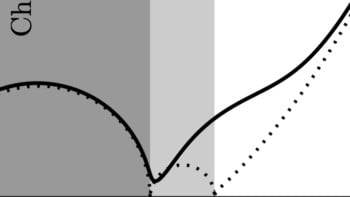A Different Universe: Reinventing Physics from the Bottom Down
Robert B Laughlin
2005 Basic Books 272pp £26.00hb

In person, Bob Laughlin is a thoroughly engaging character with the twinkling eyes of a cheeky rogue and a razor-sharp mind. In this book he sets out to convince us that the age of reductionism is over, and that the age of emergence is upon us. He argues that complex organizational structures emerge from simple rules, that this leads to “stable inevitability in the way certain things are”, as well as to “unpredictability, in the sense of small events causing great and qualitative changes in larger ones”. Every reader will surely agree with this statement of the emergent credo.
However, all “new ages” tend to fray around the edges and resemble each other after a while. I am not, therefore, convinced that the age of reductionism is quite so moribund, nor that the age of emergence is really so very different. Differences in ostensible philosophy should not be mistaken for contradictions in practice. Reductionism and emergence are complementary ways of looking at physical reality, and the true beauty of physics is the synergy between them. I persist in thinking that there are some basic scientific questions that will yield only to a reductionist approach, whereas many others – like the author’s example of why parking spaces only seem to be available when you do not need them – are clearly emergent phenomena.
Though Laughlin, who shared the 1998 Nobel prize for his work on fractionally charged particles, would probably regard me as a dyed-in-the-wool reductionist, I am not conscious of pursuing an anti-emergence agenda. Indeed, his repetitive antireductionist line gets a bit wearing after a while. His polemic is salted with plenty of amusing anecdotes and hiking yarns, but their relevance is not always obvious, and my interest in hearing about his all-expenses-paid junkets palled after a while.
Moreover, some of his bald assertions are rather shocking, even misleading to my taste. What is one to make of his statement that “the laws of electron motion beget the laws of thermodynamics”? We know that thermodynamics is a very general property of physical systems, from black holes to the many different forms of microscopic interaction. And does the “hierarchical society of physical laws” really “render the most fundamental laws…irrelevant”? Is it really the case that “all important laws are serendipitous discoveries, not deductions”? How is one to understand his statement that gauge symmetry is incompatible with relativity?
I was also left wondering why Laughlin says so little about quarks, after arguing several years ago that he could derive them as emergent phenomena. He tends to dismiss the Standard Model of particle physics as shelf after shelf of particle masses and couplings that are not basic and cannot be calculated, and then throws in for good measure some damnation by association with nuclear weapons.
Also, it is rather cavalier of him to dismiss Big Bang cosmology as unfalsifiable “notwithstanding widely cited supporting ‘evidence’ [his quotes] such as isotopic abundances…and the cosmic microwave background anisotropy”. Nevertheless, the Standard Model works. Indeed, with its reductionist extensions, it offers our only hope of understanding how the universe on the large scale got to be the way it is today, with all its matter, light elements and structures.
Despite these occasional maddening diatribes, Laughlin’s quality as an insightful physicist shines through. Some theorists might be shocked by his assertion that relativity is “caused by things, not the cause of things”. However, this is apparent, for example, when one goes beyond the specific formulation of string theory in the critical dimension: you must have just the right amount of other stuff sitting on your string if you want to recover the concept of an ambient space-time. Just as the author says, there must be something beyond the fabric of space-time, and understanding its nature may require elements of both the reductionist and emergent approaches.
Some physicists will root for Laughlin when he tilts at the windmills of nanophysics (most of which he describes as “deeply unimportant”) and nanotechnology, and many will chuckle when he asserts that engineers gain power by preventing people from finding out what they know. However, we are all in the same boat, so why rock it unnecessarily?
Fundamentally, we are all in the business of figuring out how the natural world works, and even the author denies that microscopic law is “wrong or has no purpose”. Not even the arch-reductionist Steven Weinberg would claim that the discovery of the “ultimate theory” would mean the end of physics, let alone emergent sciences such as solid-state physics or biology. Here he and Laughlin would find common ground, and I think every reader would agree with the author’s penultimate panegyric that “we are surrounded by mysterious physical miracles, and the continuing, unfinished task of science is to unravel them”.
His concept of “antitheories” – bodies of thought that stop inquiry and thus impede discovery – is also very thought-provoking. If you read this book, you may be enthusiastic or infuriated, quite possibly both on the same page. It is certainly not an antibook, since it will certainly provoke your thoughts. I could only wish that Laughlin had been somewhat less anti some of his colleagues working on the unfinished task of science in ways different from his own.



